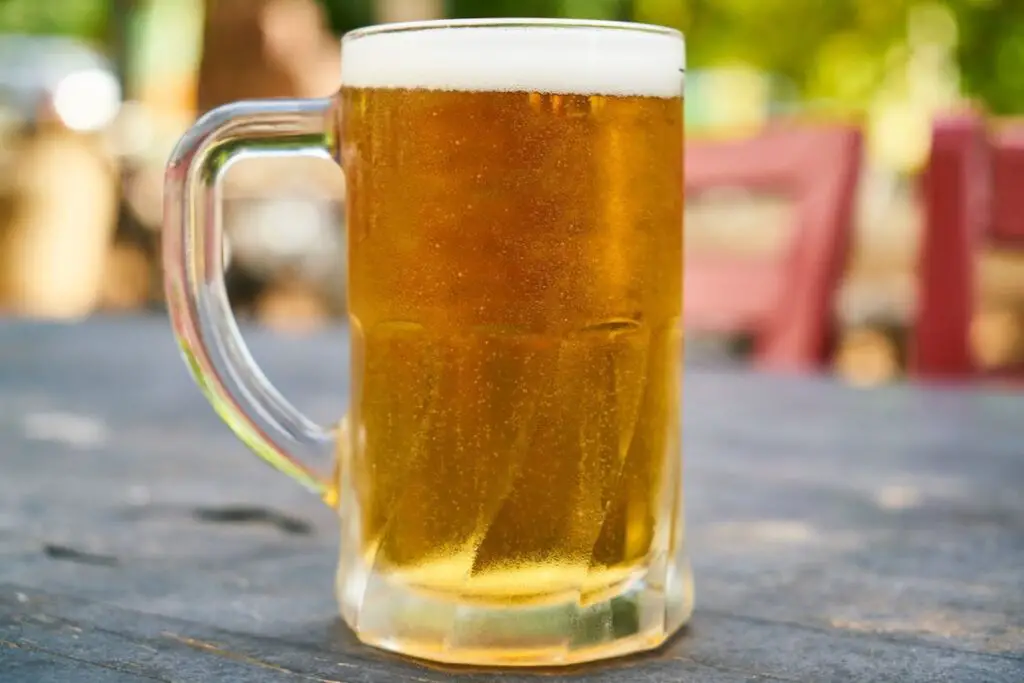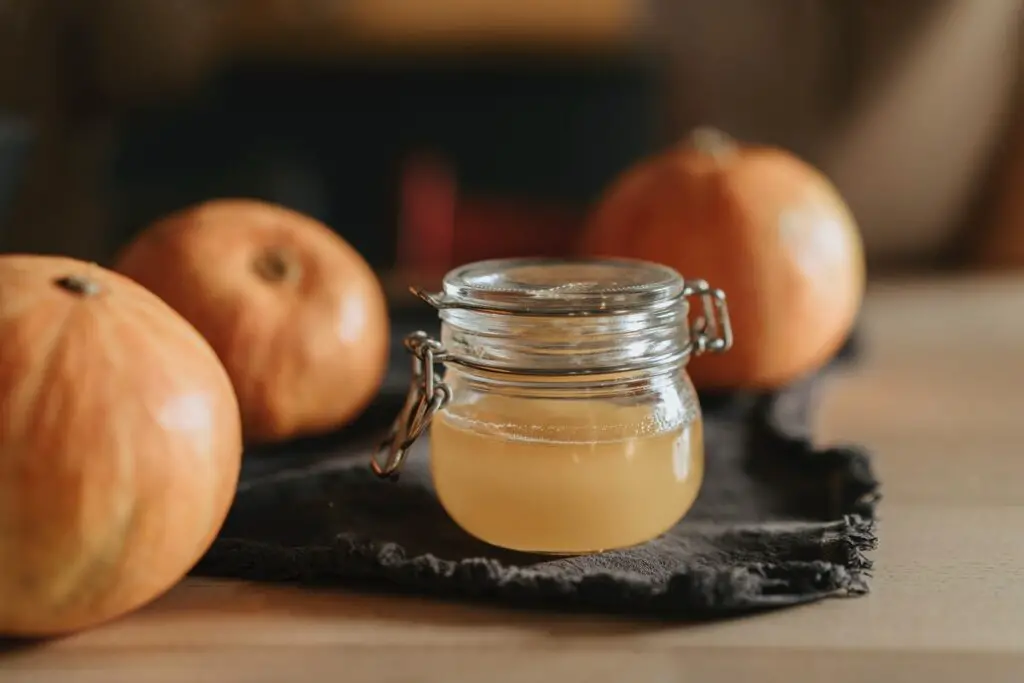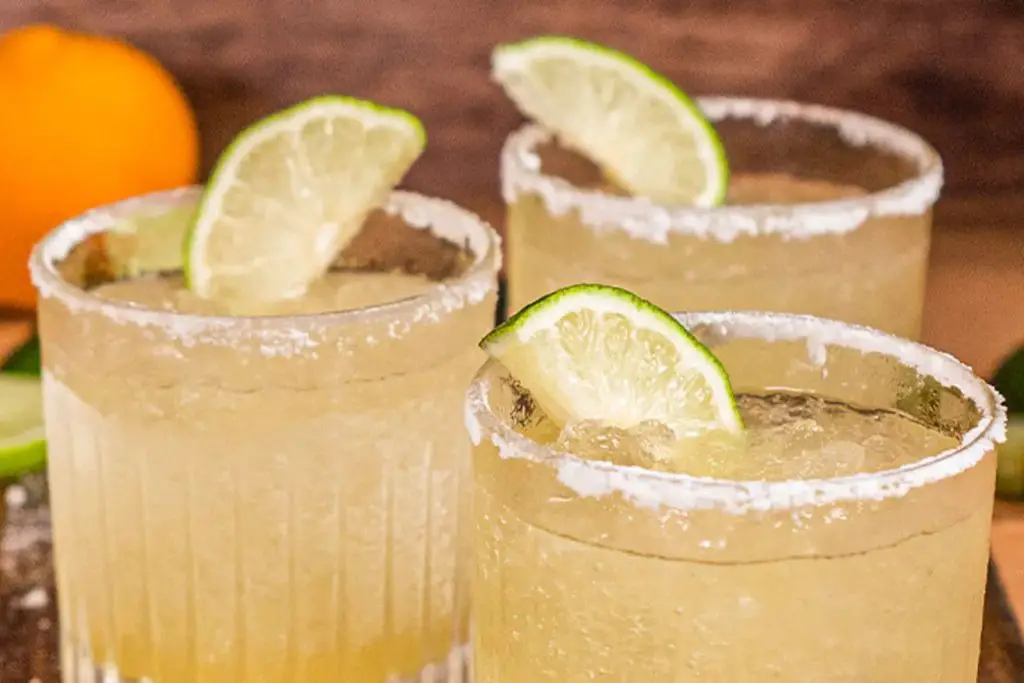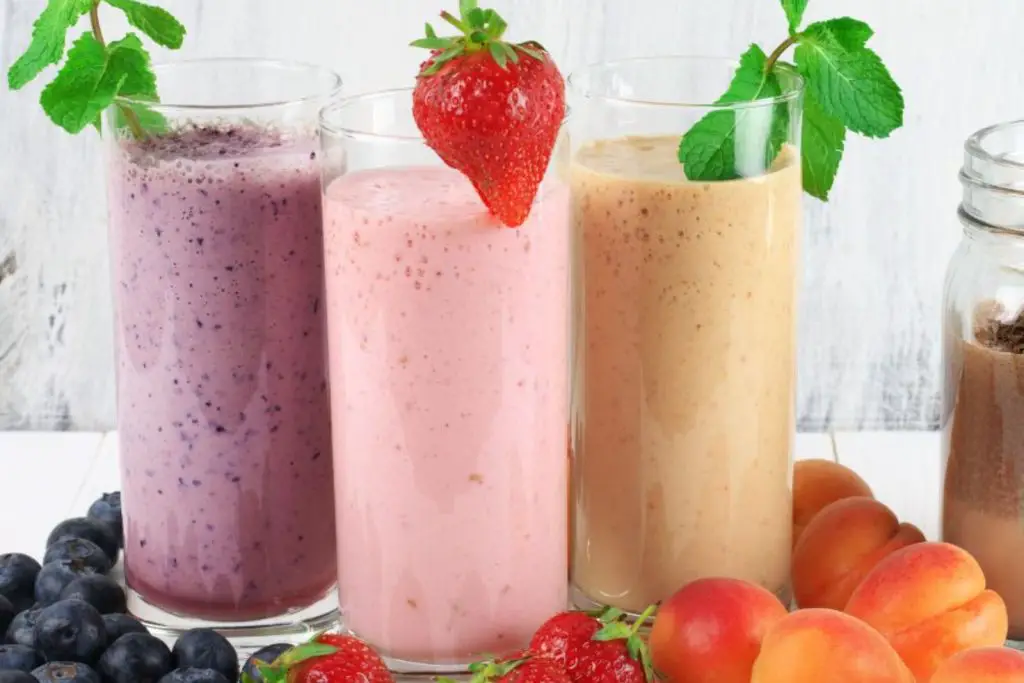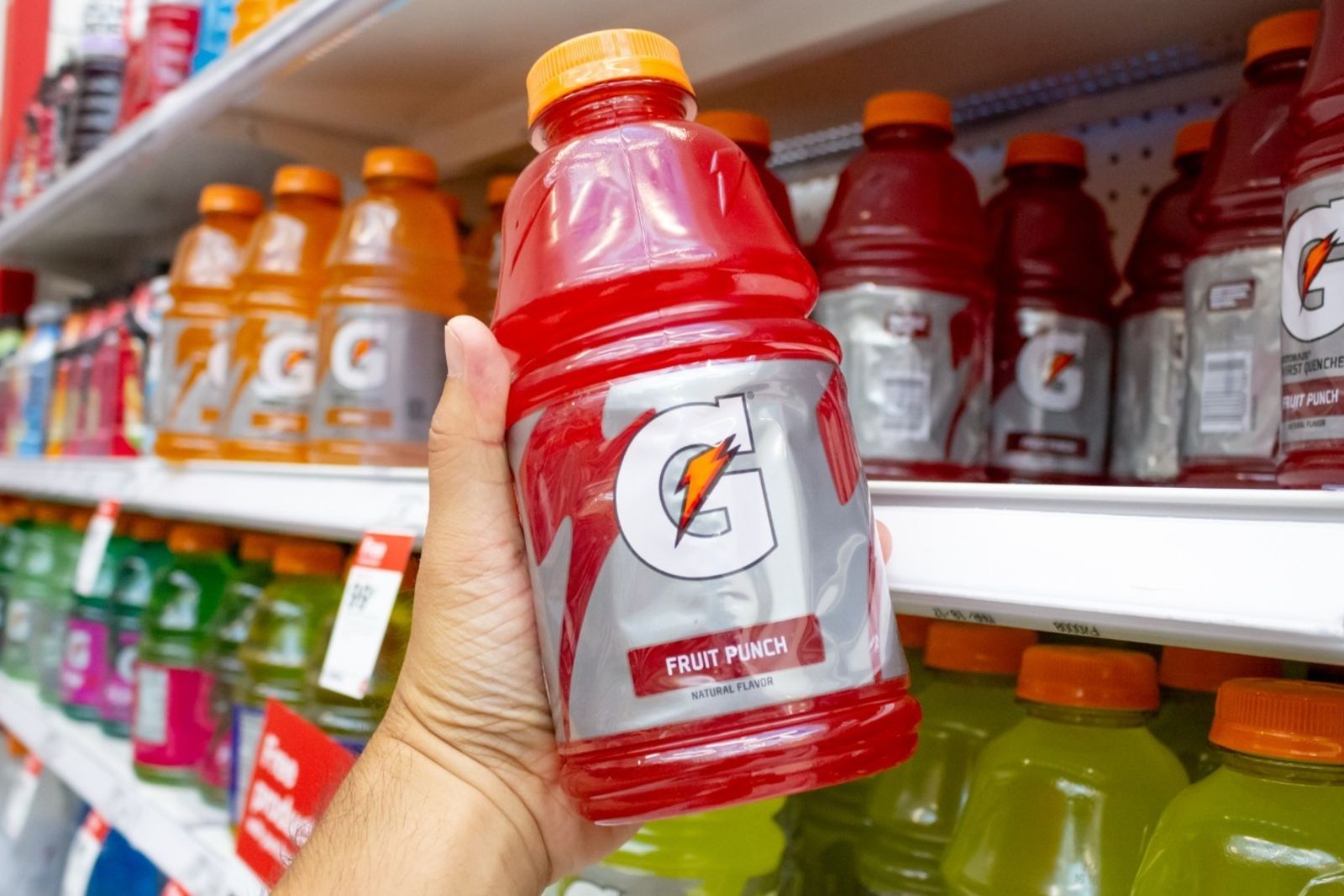
Gatorade, the quintessential sports drink, is a favorite choice among athletes and those seeking to replenish their electrolytes. While most people enjoy it chilled, have you ever wondered if you can freeze Gatorade to create a refreshing icy treat? In this article, we will explore the art of freezing Gatorade and provide you with some tips and tricks to elevate your frozen Gatorade experience.
Here’s a comprehensive guide on how to freeze Gatorade:
Step 1: Selecting the Right Gatorade Flavors
Freezing Gatorade offers a unique way to enjoy this popular sports drink. However, not all Gatorade flavors freeze equally well. While you can technically freeze any Gatorade flavor, it’s important to consider the impact it may have on taste and texture.
Citrus-based flavors, such as Lemon Lime and Orange, tend to be more resilient when frozen. The natural acidity and vibrant citrus notes help these flavors retain their refreshing qualities even in their frozen state. Freezing these flavors can provide a satisfying icy treat that still captures the essence of the original Gatorade experience.
Another set of flavors that freeze effectively while maintaining their taste are Fruit Punch and Glacier Freeze. These flavors offer a burst of fruity goodness and are well-suited for freezing. They tend to hold up well during the freezing process, allowing you to enjoy the familiar flavors and coolness when they’re transformed into a frozen form.
It’s worth noting that while other Gatorade flavors can be frozen, some may experience slight changes in taste or texture. Some flavors might become slightly diluted or develop a different mouthfeel after freezing. These changes are generally subtle and may not be a significant concern for everyone. If you have a preferred Gatorade flavor that isn’t mentioned above, feel free to experiment and see how it fares when frozen.
Ultimately, the choice of Gatorade flavor for freezing depends on personal preference. Whether you opt for the citrus-based classics or venture into other flavors, freezing Gatorade can still offer a refreshing twist to your regular sports drink routine. So, select your favorite Gatorade flavor and get ready to embark on the freezing adventure!
Can I freeze Gatorade Zero or low-calorie versions?
Yes, you can freeze Gatorade Zero or other low-calorie versions. The freezing process will not significantly affect the nutritional content. However, it’s important to note that artificial sweeteners used in these variants may have altered taste and texture after freezing, so it’s recommended to sample a small portion first to ensure your satisfaction.
Step 2: Preparing the Containers
When it comes to freezing Gatorade, choosing the right containers is essential to ensure a successful freezing process and prevent any accidents. Here’s a breakdown of what you need to know about preparing the containers:
- BPA-free plastic bottles or freezer-safe plastic containers: Opt for containers made of BPA-free plastic, as this helps ensure the safety of the frozen Gatorade. BPA (Bisphenol A) is a chemical often found in certain plastics and can potentially leach into food and beverages, so it’s best to avoid it. Look for bottles or containers specifically labeled as freezer-safe, as they are designed to withstand the low temperatures of the freezer.
- Tight-sealing lids: It’s important to choose containers with lids that create a tight seal. This helps prevent any leakage during the freezing process and keeps the Gatorade fresh and free from contaminants. A secure lid also helps maintain the flavor and prevents freezer odors from seeping into the Gatorade.
- Avoid glass containers: Glass containers should be avoided when freezing Gatorade. Liquids, including Gatorade, expand when they freeze. Glass containers are susceptible to cracking or shattering under the pressure of the expanding liquid, potentially causing a mess or even injury. It’s safer to stick with plastic containers that can withstand the expansion without any risk of breaking.
- Leave some headspace: Before pouring the Gatorade into the containers, it’s important to leave some space at the top, known as headspace. The freezing process causes liquids to expand, and if the container is filled to the brim, it may lead to leakage or bursting. Leaving about an inch or two of headspace provides enough room for the Gatorade to expand without causing any issues.
Can I freeze Gatorade in ice cube trays?
Absolutely! Freezing Gatorade in ice cube trays is a convenient way to have individual portions for adding to water or other beverages. Simply pour the Gatorade into the trays, freeze, and then transfer the cubes to a freezer bag for storage.
Step 3: Chilling the Gatorade
To ensure the best results when freezing Gatorade, it’s important to pre-chill the beverage before placing it in the freezer. This step helps preserve the original taste and texture of the Gatorade and minimizes excessive expansion during the freezing process. Here’s why chilling the Gatorade is recommended:
- Taste preservation: Cooling the Gatorade in the refrigerator before freezing helps maintain its original flavor profile. Gatorade is formulated with specific combinations of flavors and ingredients to deliver a refreshing and thirst-quenching experience. By pre-chilling the Gatorade, you preserve these flavor profiles and ensure that the frozen Gatorade retains its intended taste.
- Texture control: Chilling the Gatorade before freezing also helps control the texture of the final frozen product. If you were to freeze Gatorade directly at room temperature, the sudden change in temperature could lead to inconsistent freezing and result in uneven texture or ice crystals. By cooling the Gatorade in the refrigerator first, you allow it to reach a uniform, chilled state, which promotes even freezing and contributes to a smoother, more enjoyable frozen texture.
- Expansion prevention: When liquids freeze, they expand. By chilling the Gatorade before freezing, you help reduce the extent of expansion during the freezing process. The pre-chilling process allows the Gatorade to reach a lower starting temperature, which minimizes the overall expansion and helps prevent the containers from bursting or leaking in the freezer.
To chill the Gatorade, simply place the bottles or containers in the refrigerator for a few hours until they reach the desired temperature. This typically takes a few hours, but you can adjust the time based on personal preference. It’s important to note that the Gatorade should be cold but not frozen when you transfer it to the freezer. Pre-chilling sets the stage for a successful freezing process, preserving the taste and texture of the Gatorade while ensuring a pleasant frozen treat.
Step 4: Freezing the Gatorade
After adequately chilling the Gatorade in the refrigerator, it’s time to freeze it and transform it into a refreshing frozen treat. Here’s how to freeze Gatorade effectively:
- Transfer to the freezer: Carefully move the chilled Gatorade containers from the refrigerator to the freezer. Ensure that the containers remain upright during this process to prevent any leakage or spills. Placing the containers on a stable surface in the freezer will help maintain their position.
- Partial freezing: Once the Gatorade containers are in the freezer, allow them to partially freeze before adjusting their position. Partial freezing typically takes about 2 to 4 hours, depending on the temperature of your freezer and the size of the containers. This initial phase of freezing helps the Gatorade solidify enough to retain its shape when repositioned.
- Laying the bottles on their sides: Once the Gatorade is partially frozen, it’s advisable to lay the bottles on their sides. This position allows for even freezing and helps achieve a consistent texture throughout the beverage. By laying the bottles horizontally, the Gatorade freezes more uniformly, avoiding potential ice crystals or uneven freezing.
- Adjusting container positions: If you are using plastic containers instead of bottles, you can still place them on their sides during the freezing process. However, you may also consider gently shaking or stirring the partially frozen Gatorade inside the container to distribute any ice crystals and ensure an even texture. This step helps prevent a frozen block of Gatorade and allows for a smoother, slushy consistency.
Step 5: Timing and Monitoring
The timing and monitoring of the freezing process are crucial to achieving the desired consistency and preventing the Gatorade from freezing solid. Here’s what you need to know:
- Freezing time variation: The freezing time for Gatorade can vary depending on factors such as the temperature setting of your freezer and the size of the containers. On average, it takes about 2 to 4 hours for Gatorade to partially freeze. However, it’s important to note that these are general guidelines, and the actual freezing time may differ in your specific freezer. Factors like freezer efficiency, container material, and the volume of Gatorade can influence the freezing time.
- Desired consistency: The freezing time also depends on the desired consistency of your frozen Gatorade. Some people prefer a slushy texture, while others aim for a more solid, popsicle-like consistency. Keep in mind that the longer the Gatorade stays in the freezer, the firmer and more solid it becomes. It’s essential to monitor the freezing process to achieve the consistency you prefer.
- Preventing over-freezing: It’s crucial to keep a close eye on the containers during the freezing process to prevent over-freezing. If the Gatorade freezes solid, it may affect the taste and texture, resulting in a less enjoyable frozen treat. To avoid this, it’s recommended to set a timer or use markings on the containers to keep track of the freezing time. Regularly check the containers and test the texture by pressing lightly on the surface to ensure the desired consistency is reached.
- Adjusting freezing time: If you prefer a softer, slushy consistency, you may need to remove the containers from the freezer before they freeze completely. On the other hand, if you prefer a more solid popsicle-like texture, you can leave the containers in the freezer for a longer period. Adjust the freezing time according to your personal preference and experiment to find the perfect balance between texture and taste.
What is the best temperature for freezing Gatorade?
The best temperature for freezing Gatorade is at or below 0 degrees Celsius (32 degrees Fahrenheit). This temperature ensures that the Gatorade freezes efficiently while maintaining its quality and taste. It’s important to note that setting the freezer temperature too low may result in the Gatorade freezing solid, so it’s recommended to find a balance between freezing efficiency and the desired texture.
How long can Gatorade last in the freezer?
Gatorade can typically be stored in the freezer for up to 3 months without significant quality degradation. However, it’s important to note that freezing Gatorade can alter its texture and taste. The freezing process may cause separation of ingredients and affect the overall sensory experience, so it’s advisable to consume frozen Gatorade within a reasonable timeframe for the best results.
Step 6: Enjoying the Frozen Gatorade
Now that you’ve successfully frozen the Gatorade to your desired slushy consistency, it’s time to enjoy the refreshing frozen treat. Here’s how you can savor the frozen goodness:
- Allowing to soften: After removing the containers from the freezer, let them sit at room temperature for a few minutes to soften slightly. This step makes it easier to scoop or pour the frozen Gatorade and enhances the overall texture and taste. The slight softening allows the frozen Gatorade to become more spoonable or drinkable, depending on your preference.
- Creating a slushy drink: For a slushy drink experience, you can transfer the frozen Gatorade to a blender. Blend it on low speed until you achieve the desired consistency. This method creates a smooth and icy beverage that you can pour into a glass and enjoy with a straw or spoon.
- Making popsicles: If you prefer a more popsicle-like experience, insert popsicle sticks into the partially frozen Gatorade containers. Ensure that the sticks are inserted securely, leaving enough room at the bottom for a sturdy hold. Return the containers to the freezer and allow them to freeze completely solid. This process usually takes an additional 3 to 4 hours, depending on the size of the containers and the temperature of your freezer.
- Serving and enjoying: Once the frozen Gatorade is ready, whether in slushy form or as popsicles, it’s time to serve and enjoy. If you made popsicles, gently run warm water over the outside of the container to loosen them, making it easier to remove the popsicles. Serve the slushy drink in glasses or enjoy the popsicles on their sticks. Savor the frozen Gatorade as a refreshing treat, perfect for hot summer days or as a unique twist on a sports drink.
Remember to store any remaining frozen Gatorade in airtight containers or freezer bags in the freezer to maintain its texture and prevent freezer burn. This allows you to enjoy the frozen Gatorade over multiple servings whenever the craving strikes.
How do I defrost Gatorade?
To defrost Gatorade, simply transfer the frozen container from the freezer to the refrigerator and allow it to thaw gradually. The refrigerator’s cool temperature provides a controlled thawing environment. Depending on the size of the container, it may take several hours to fully defrost. Avoid using methods like microwave or hot water to speed up the process, as they can negatively affect the taste and quality of the Gatorade.
Other related questions
Can I refreeze Gatorade?
It is generally not recommended to refreeze Gatorade once it has been thawed. Freezing and thawing cycles can impact the quality, taste, and texture of Gatorade. The repeated temperature fluctuations may cause changes in the product, such as separation and loss of flavor. It is best to consume Gatorade after it has been thawed and not refreeze it to maintain the optimal sensory experience.
How do I know if the Gatorade has gone bad after being frozen?
After Gatorade has been frozen and thawed, there are several signs to look for to determine if it has gone bad. First, check for any unusual odor, discoloration, or mold growth. If the Gatorade exhibits an off smell or appearance, it is best to discard it. Additionally, if the texture has significantly changed, such as becoming watery or grainy, it may indicate spoilage, and consumption should be avoided.
Can I use Gatorade powder mix to make frozen Gatorade?
Yes, you can use Gatorade powder mix to make frozen Gatorade. Follow the instructions on the packaging to prepare the powdered mix and then freeze it using the same steps outlined in the article. It provides a convenient option for making custom-flavored frozen Gatorade.
Can I add fruit or other ingredients to the Gatorade before freezing?
Yes, you can add fruit or other ingredients to Gatorade before freezing to enhance its flavor and create a more customized frozen treat. Sliced fruits, such as berries or citrus, can be added to infuse the Gatorade with their natural flavors. It’s important to note that some fruits may slightly change the texture or color of the Gatorade when frozen, but this can add a delightful visual and taste experience.
Can I add electrolyte tablets to the Gatorade before freezing?
It is not recommended to add electrolyte tablets to Gatorade before freezing. Electrolyte tablets are designed to dissolve in water, and freezing them along with Gatorade may hinder their dissolution process. It’s best to dissolve the electrolyte tablets in water separately and then combine the electrolyte solution with Gatorade after it has been frozen and thawed, ensuring the tablets dissolve properly and maintain their intended function.

